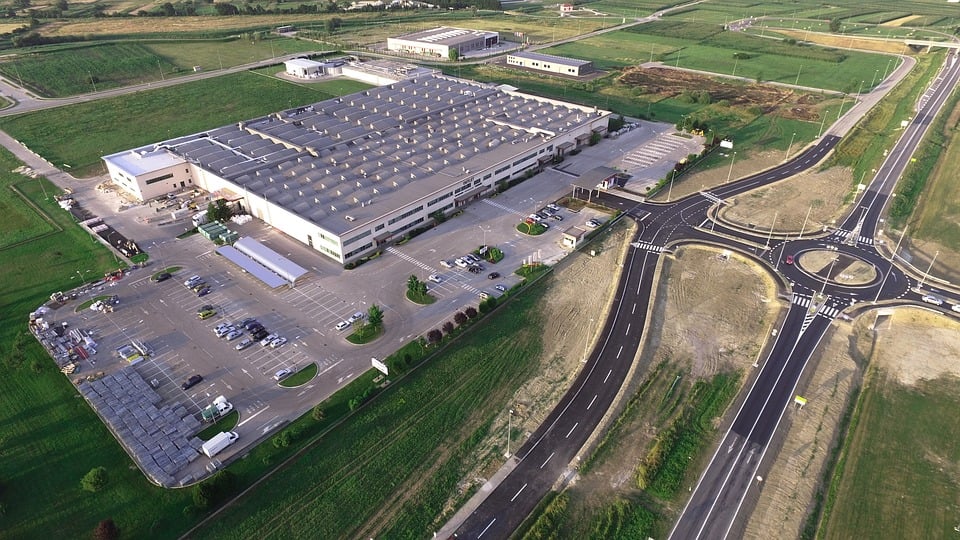Sustainability | February 6, 2024
Beyond the Checklist: Rethinking Green Building Ratings for Real Carbon Impact
Reporting sustainable building performance is becoming increasingly popular. With individual green building certifications from organizations like BREEAM, LEED, and portfolio-level sustainability ratings from GRESB. More recently, these organizations have been called out in the press for creating a billion-dollar industry that “isn’t helping to cut carbon.”
The act of certifying or rating a building for sustainability performance has long been debated – at least since the nineties when the US Green Building Council was launched. Our own Ted Caulkins, vice president of sales, was a founding member of the Council. “I was working in the hottest real estate market at the time, San Francisco, and some friends said they were starting something to bring greater definition to green buildings,” Ted recalled. Up until that point, there was very little industry alignment. Several performance categories were created, ranging from air quality to water usage to occupant transportation.
Fast forward three decades, and the current approach to certification and ratings still covers many sustainability performance indicators. However, as the impacts of climate change have become more observable, investors have become much more concerned with carbon emissions reductions above other metrics. The systems have been slow to evolve, and it is making it difficult for investors to determine where they should invest their money.
Additionally, some of the most widely used certification and rating systems reward buildings and companies that have successfully collected data points to measure performance.
And it comes at a significant cost.
Companies spend internal time and resources to gather data and prepare submissions but often, with larger portfolios or more complex operations, in-house resources are only the tip of the iceberg. External consulting firms and resources from the certifying bodies create additional costs and administrative burdens.
It raises the question – is it a better financial decision to direct resources toward reducing energy cost and carbon emissions through a more proactive and programmatic approach for maintenance, repair, and replacement of building systems?
The Solution that Created a Problem
Since the inception of voluntary frameworks like BREEAM in 1990, the U.S. Green Building Council’s development of LEED five years later in 1995, and the introduction of GRESB in 2009, the number of green building certifications and rating systems has ballooned. In the present day, the “alphabet soup” of green building frameworks is the punchline of jokes during the summer conferences circuit.
But which of these standards is “the” standard? The answer is simple – none of them.
It may help to think of this in the context of smartphone power connectors across different manufacturers. Even within the USB protocol, several viable port types exist. With myriad different standards across different countries and brands, the result is excessive manufacturing that is passed on as cost to the end user.
To complicate things more, certifications may be available at different stages of a building’s development including during the design and construction phase and during operations and maintenance. While a new building built in 2020 may have had a high as-designed rating, inefficient operations practices may make it a laggard in energy efficiency today.
So, what’s the result of this explosion in certifications? Companies are spending time and money on ratings that might not yield the efficiency gains and bottom-line savings that they might have expected.
The Mantis Solution that Cuts through the Issue
At Mantis, we help facility owners reduce operating costs and manage regulatory risk while meeting evolving investor and market demand for sustainability performance.
Our approach is simple. Our team of experts in sustainability, energy, and facilities put themselves in the place of the real estate manager. When they invest in a property, they typically have a thesis – how long they will hold it for, what the tenants or occupants want, what equipment is old and must be replaced, and the property performance goals.
So, how can you improve sustainability?
Start with that thesis and incorporate the following:
Step 1 - Prioritize Buildings
- Target properties where energy cost savings can accumulate over time (within the hold or leasing period)
- Focus on assets requiring replacement of failing components
- Identify buildings with tenants committed to net-zero goals
- Consider properties subject to local building performance standards or tied to investors with publicly declared sustainability commitments
Step 2 - Identify High-ROI Interventions
- Benchmark your buildings against each other to identify the leaders and the laggards – there are likely low/no cost solutions for the “worst of the worst”
- Identify projects that pay back within the hold period
If the projects create energy cost savings for the tenants, you can ask them to share costs for the investment
- Re-evaluate your design/specification for replacing failing equipment
There's often a more efficient option available for an incremental cost that can be quickly paid back
Step 3 - Implement the Plan
- Clarify key value drivers associated with interventions – include energy cost savings as well as other factors such as reduced facility downtime and improved property valuation
- Identify key actions for implementation as part of a “playbook” with clearly defined roles for in-house vs service provider staff, tools, and processes
- Develop a scorecard to track and motivate the necessary maintenance, repairs, and replacements
A holistic energy, facilities, and sustainability consultant like Mantis can get you started using readily available information. After analyzing the data and interviewing key staff, we will develop a program aligning with on-site priorities and organizational sustainability goals. Leveraging our plan, we'll project manage activities to de-risk the approach and help you realize tangible savings.
Contact a Mantis Pro today to learn how we can achieve meaningful business value with your available budget.
Related Posts
Discover more content and insights from Mantis Innovation

Carbon Credits Explained: A Primer for Achieving Your ESG Goals
In the race to achieve net-zero emissions, carbon credits have become a crucial tool for companies with hard-to-abate emissions. As of 2024, almost half of the Fortune 500 companies have net zero

Five Trends Driving Data Center Facility Energy Optimization
Today’s digital economy, commercial and industrial digitalization, and the recent explosion in artificial intelligence and machine learning (AI/ML) powered computing are driving massive growth in

Modernizing Manufacturing Facilities: The Drivers and Direction
This blog is just a glimpse into the deep dive we take in our new white paper, Modernizing Manufacturing. Download the white paper here to skip the teaser and get the whole story. The stage is set

Federal and State Policies Driving Commercial Fleet Electrification
As governments and industry transition to a low-carbon economy, regulations have begun rolling out at the federal level and in leading-edge states focused on commercial fleet electrification. Policy